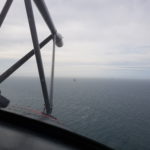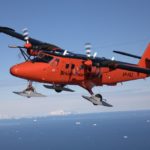Offshore gas fields worldwide are major sources of methane emissions. Developing reliable methods to locate emissions and pinpoint sources is critical for quantifying the volume of methane emissions from gas fields across the world. Understanding how the methane is emitted from gas platforms will help inform policy and industry regulations.
Some emissions are from routine operations or minor engineering failures. Others are large unexpected leaks, such as the Elgin gas leak in the North Sea. In less-regulated fields methane is simply flared or even vented. Measuring how much methane is emitted through activities such as these is a key component for producing an accurate record of global methane emissions.
The North Sea Methane Project is co-ordinated by Dr David Lowry, Royal Holloway University of London, and focuses on identifying and quantifying emissions from the southern North Sea gas fields. The study will help develop techniques that can be applied to gas fields elsewhere to assess emissions at local scales. This multi-partner project involves Royal Holloway University, British Antarctic Survey and UK Higher Education Institutes including University of York, University of Manchester and University of Cambridge.
Methane emissions from gas platforms in the southern North Sea will be quantified using a series of aircraft campaigns using one of BAS’s Twin Otter aircraft and MASIN instrument suite. The data collected will determine the source of the emissions, distinguishing between land-based sources and gas industry sources. Methane molecules emitted from the two distinct sources have different chemical signatures. Measuring the relative proportions of each of these types of molecules – known as isotopes – allows the source to be defined.
This project is funded under the Climate and Clean Air Coalition (CCAC) Oil and Gas Methane Science Studies. The studies are managed by United Nations Environment Programme in collaboration with the Chief Scientist, Steven Hamburg of the Environmental Defence Fund.
The overall project aims are to:
- Gain an overview of the volume of methane emitted during the drilling, extraction and transportation of natural gas.
- Identify the sources of methane emissions using carbon-isotopic and volatile organic compound fingerprinting.
- Develop methods for rapidly quantifying (and sampling) methane emissions from gas platforms, using aerial surveys.
- Generate peer-reviewed research to inform policy and industry regulations to reduce methane emissions from gas platforms.
23 April, 2019
Scientists embark on a three-week flying campaign today (23 April) to study methane emissions from gas fields in the southern North Sea. Using specialised scientific equipment, on board one of …
Airborne instrument capability

